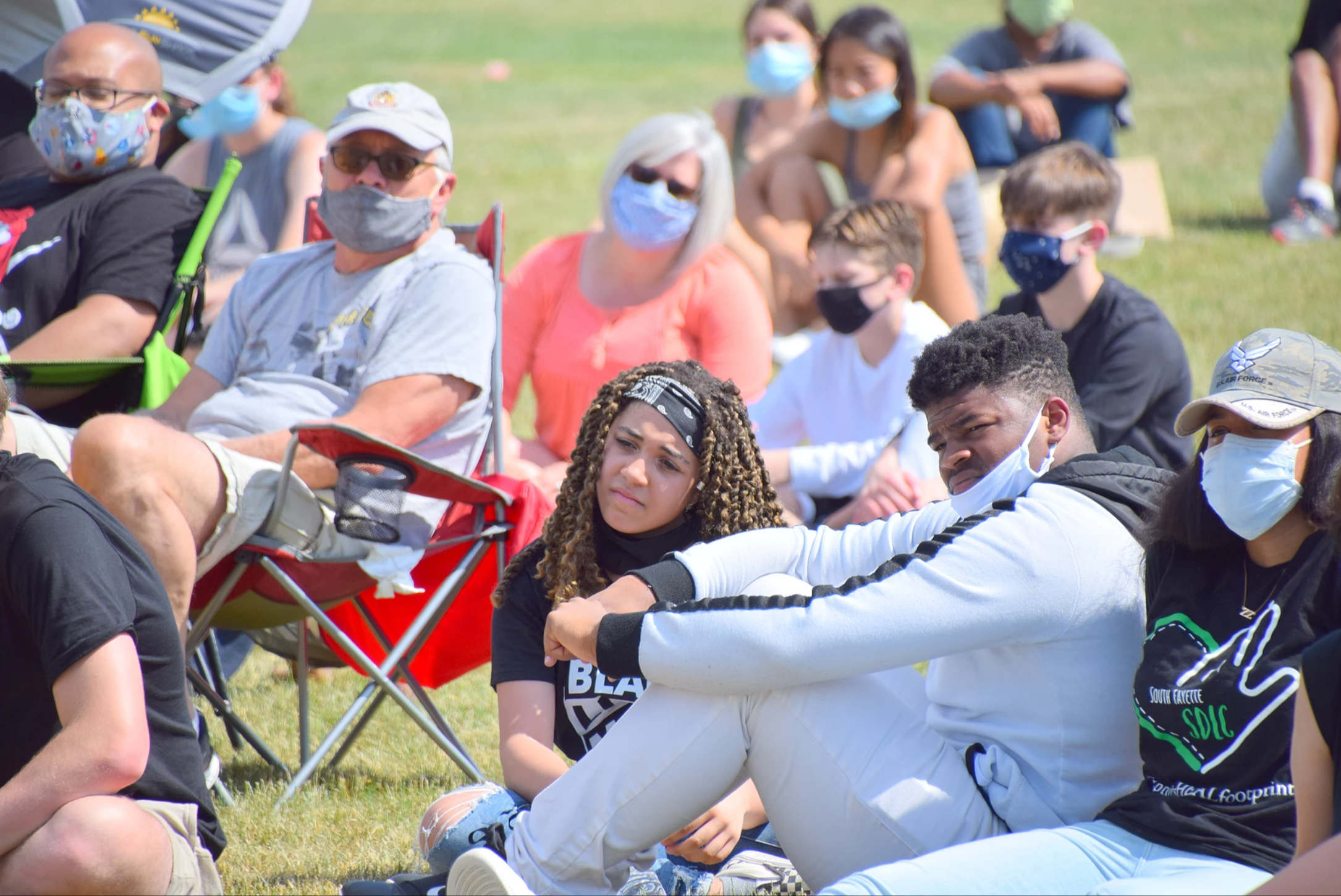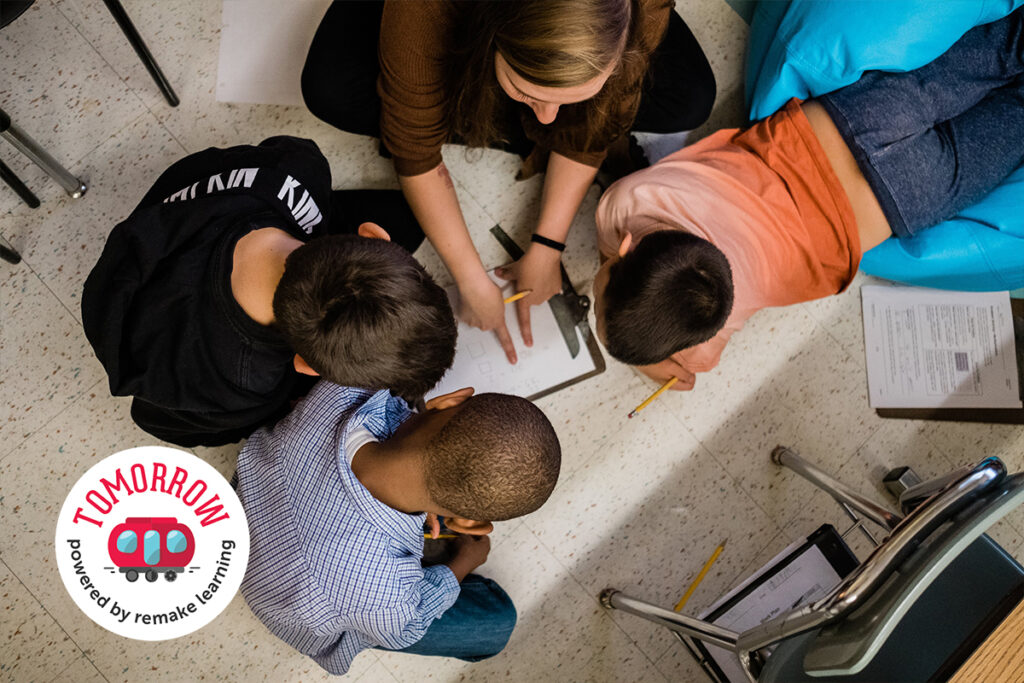A few weeks ago, a group of young students in New Brighton sat down to take a spelling test. Their district has spent the past year embracing digital learning and seeking out the best ways to use new technology. And yet by choice, this spelling test was given traditionally, with neatly sharpened pencils and crisp sheets of paper.
These students were working on the important core skill of handwriting, says New Brighton Area School District superintendent Dr. Joseph Guarino. And they were reinforcing their knowledge of spelling words through a kinetic experience that’s long been known to help with knowledge retention.
Old-fashioned as it might seem, Guarino says, that “brain to arm to pencil to paper” connection has real value for many children.
But while this exercise began in a deliberately analog way, the spelling test ended with each student snapping a photo of their paper with their digital device. The tests were instantly sent to their teacher, who could grade them without lugging home a stack of papers. While grading, she could reply to each child with as much or as little feedback as needed—something many of us couldn’t have imagined a generation ago when we’d simply see the cryptic words “see me” in red pen on a test we’d struggled to ace.
We’ve reached a pivotal moment of change in the history of education. As last year’s Remaking Tomorrow report pointed out, the Pittsburgh region “has seen increased exploration of new forms of learning, assessment, support and connection. Funding has been mobilized more quickly than usual, and organizations have been sharing resources and pushing to provide technology access for every student.”
This innovation-driven approach is necessary. There is a clear demand from families and teachers to avoid going back to what once passed for “normal” before the pandemic.
But even as we shake off old, limiting approaches in favor of bold, new choices, Guarino says, we can be thoughtful about what we keep and what we leave behind.
Forging the future must involve seeking ways to build on past wisdom, while also having the courage and vision to know when to start from scratch. And all of this must be approached with equity and justice in mind.
New Levels of Student Voice, Born from Traditional Mentoring
Last year, an 8th grade student at South Fayette was determined to hold a Black Lives Matter rally in her town. She had seen news coverage of the deaths of Ahmaud Arbery, Breonna Taylor and George Floyd, and was determined draw attention to the ongoing crisis of racial injustice.
But there was no history of students in her community organizing events like this. There was no traditional approach for her to follow. She didn’t know where to begin.
Fortunately, her school is home to the original SHOUT (Social Handprints Overcoming Unjust Treatment) club. This groundbreaking group, which applies to social justice an approach originally developed to combat climate change, was founded by students at South Fayette during the 2019-2020 school year.

So this 8th-grader connected with a senior student who was a co-founder of SHOUT. That senior drew on the age-old tradition of mentoring and apprenticeship to guide the middle schooler through the process of planning and staging her rally.
She helped the younger student apply for permits and even communicate with the police about plans for the rally, says Dr. Chuck Herring, the diversity and inclusion director for the district and mentor to the SHOUT members.
Perhaps most important, she served as an encouraging and more experienced voice to help the younger student keep on believing she could accomplish something challenging. That human connection belongs at the heart of even the most innovative and groundbreaking moments in the schools of tomorrow.
Outside-the-Box Scheduling, Leading to Deeper Connections
As Cornell School District in Coraopolis looks to innovate, they are also keeping human connection at the center of their fresh ideas.
The district is looking at how they might offer teachers and families more flexibility. The pandemic has shown us that many parents juggle complicated work schedules and can’t always pick up a child who needs to stay after school for tutoring or other enrichment. And teachers juggle their own household responsibilities, so the hours right after school aren’t always a time when they can be available to students—especially if they have small children of their own.
So what if schools allowed teachers and students to meet up over Zoom on a totally different schedule, if that worked better for them?
“We’re talking with our teachers about this now,” says Cornell superintendent Dr. Aaron Thomas. “Why does it have to be a traditional after-school type of a model? Why can’t we do something non-traditional?”
Thomas points out that it’s very important to make sure teachers aren’t overworking themselves and aren’t expected to work during evenings or weekends. But what if they’d prefer to plan an enrichment group or other typically after-school learning session for a Saturday morning or a weekday evening after dinner?
If that works better for the teacher and better for the students and their families, why should we let tradition keep us from embracing this approach? The priority should be meeting families’ needs and teachers’ needs, instead of feeling so bound to tradition that we can’t experiment.
Technology makes innovations like these possible. But it can only serve tomorrow’s learners if it is used to build and reinforce human connection, and it coexists alongside the best of what’s come before.
